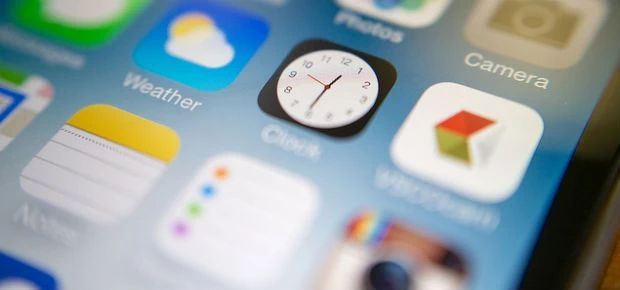
Partner Article
The art of content marketing
Walk into the lobby of any of the biggest brands around the world, and you’re likely to see the kind of content marketing that the people with the purse strings like. Art. Art impresses; art communicates; art has impact.
Ever since the Catholic Church commissioned its 16th Century content marketing masterpiece to promote itself, Michelangelo’s Sistine Chapel ceiling, brands have been working with artists and using art as a marketing medium. Corporate art now makes up a significant portion of the $64bn art market.
And today, with the rise of online art (now a market worth $2bn), digital content marketers are beginning to turn to art as an effective content marketing solution. For example, UK department store Debenhams recently eschewed the cultural shallows of cat clips and content clutter to begin working with graduates from prestigious art schools - Central Saint Martins and the Royal College of Art – through Gather.ly, a network of UK artists. The first output of the collaboration is a series of illustrations – The Art of Interpretation - to support a marketing campaign around the chain’s bra fitting service. Showcased online and used as marketing assets, Debenhams has joined the ranks of other artful content marketing pioneers - Louis Vuitton, Nike and Burberry.
Die Pussy, Die!
So could art become the new gold-standard in content marketing? Could content marketers become new patrons of digital art - commissioning, sponsoring, curating, showcasing digital artists – and using their work as marketing collateral? It’d certainly be a radical departure from the current strategy of clogging up user feeds with the low-grade brand effluent and cat pictures. But let’s face it, that hasn’t really turned out too well, has it? Facebook had to rudely remind us - by hiding our content clutter from users - that social media is an advertising platform, not a content marketing publishing platform for brand freeloaders.
But Does Art Work?
The digital marketing agency SYZYGY Group recently ran an experiment to test the effectiveness of artful content marketing. Working with a range of digital artists including Barcelona-based brothers Juan and Alejandro Mingarro, SYZYGY commissioned a series of promotional pieces of digital art designed to promote the visibility of the Group. Called #20Things, the art was showcased online and its effectiveness as marketing collateral was benchmarked against market reports, blogs and social media posts. Art won hands down in terms of reach and positive feedback.
Good Economics
There are two further reasons to support this vision of content marketing as art. The first is economic. Artists are poor - even good artists. And artists are plentiful. This means procuring quality art, particularly digital art, for marketing purposes is relatively inexpensive. As a case in point, the artists agreed to work for Debenhams for free, or rather for payment in kind, exposure. Moreover, online platforms such as gather.ly make it easy, fast and cost-effective for brands to connect with artists. In the same way that open outsourcing platforms such as 99designs and Crowdspring exist for commissioning graphic designers to produce cost-effective logos, platforms such as NewMasterArtist, gather.ly and Adobe’s Behance are evolving into artist collaboration platforms open to brands.
Smart Psychology
Secondly, content marketing as art makes sense from a psychological perspective. Art harnesses what Nobel prize-winning psychologist Daniel Kahneman calls our ‘System 1’ mind, our instinctive, intuitive and emotional mind that works by association rather than reason. We see art, and we ‘feel’ it, and are moved by it. And because art works by emotional association - brand sponsored art that makes us feel good makes us feel good about the brand as well. This ‘System 1’ marketing bypasses our logical but lazy ‘System 2’ mind that we only haul into action when we have to deliberately consider brands, prices, and benefits. By connecting with us intuitively and emotionally rather than using persuasion and reason, art represents a marketing direct hit to the heart. And as market research is confirming, this kind of artful ‘System 1’ marketing that evokes emotional rather than rational responses is particularly effective.
Of course, art is not a panacea for today’s crisis in content marketing. We’re still producing far too much disposable digital clutter and spending too much on high-risk content spectaculars. And for some, brand collaborations with digital artists may produce a similar ‘ick factor’ to brands that sponsor bands and musicians. It feels ham-fisted; you can’t buy cool by sponsoring a cool artist. Dealing with this ‘ick factor’ in brand art will be a challenge that we’ll need to overcome, but ick factor notwithstanding, we’d rather bet on art than cats.
The future of content marketing is art.
Dr Paul Marsden, Consumer Psychologist, SYZYGY Group
This was posted in Bdaily's Members' News section by Dr. Paul Marsden .
Enjoy the read? Get Bdaily delivered.
Sign up to receive our popular morning National email for free.








 How to make your growth strategy deliver in 2026
How to make your growth strategy deliver in 2026
 Powering a new wave of regional screen indies
Powering a new wave of regional screen indies
 A new year and a new outlook for property scene
A new year and a new outlook for property scene
 Zero per cent - but maximum brand exposure
Zero per cent - but maximum brand exposure
 We don’t talk about money stress enough
We don’t talk about money stress enough
 A year of resilience, growth and collaboration
A year of resilience, growth and collaboration
 Apprenticeships: Lower standards risk safety
Apprenticeships: Lower standards risk safety
 Keeping it reel: Creating video in an authenticity era
Keeping it reel: Creating video in an authenticity era
 Budget: Creating a more vibrant market economy
Budget: Creating a more vibrant market economy
 Celebrating excellence and community support
Celebrating excellence and community support
 The value of nurturing homegrown innovation
The value of nurturing homegrown innovation
 A dynamic, fair and innovative economy
A dynamic, fair and innovative economy